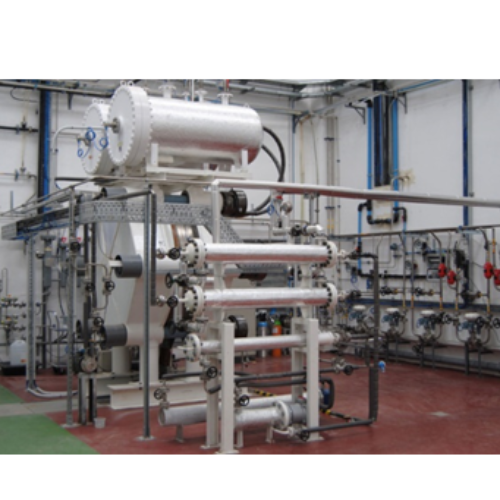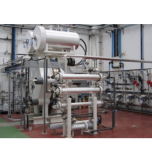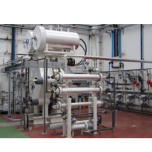
Electrolysis test benches
Products


Information
The Aragon Hydrogen Foundation's electrolysis test bench is a state-of-the-art facility for the research, development and validation of electrolysis technologies, a key process in the production of green hydrogen. The bench is located in the Walqa technology park (Huesca) and is a strategic tool for promoting innovation and the transition to renewable energy sources.
Main features of the electrolysis test bench
1. Technological versatility. It can be used to evaluate different technologies under real, customised conditions. It is designed to work with different types of electrolysers, such as :
- alkaline electrolysers.
Pilot-scale alkaline water electrolyser test bench (20 kW)
ELYNTEGRATION - ID: 671458 ; www.elyntegration.eu - 20 kW The AEL test bench has been designed and built to work in highly dynamic conditions where the load changes rapidly and abruptly, while being capable of operating at pressures of up to 60 bar. As part of its design, its control and communication system is an important element, as it has been designed and implemented not only to monitor and control all the operating parameters, but also to shut down the system itself in a safe state should any of the parameters exceed the expected value. The power electronics include a power supply unit (3300A/18V). All this makes the system capable of performing accelerated stress tests (AST) to assess the potential degradation of components in the stack.
An upgrade of its capabilities is planned for 2023-2024 to be able to increase the operating temperature beyond 100ºC and the output pressure up to 100 bar in order to test new batteries designed with the ambition of producing pressurised H2 at high efficiency.
Industrial-scale alkaline water electrolyser test bench (250 kW)
The most promising results obtained during the pilot-scale tests, which established the basic knowledge of the technology, could be validated and demonstrated on an industrial scale. This methodology will enable new materials to be scaled up and manufactured to meet market requirements. The system can emulate frequency variations, voltage variations, harmonics, flicker phenomena and voltage drops. The system can be used to test the AEL and PEMEL before connecting them to weak grids, grids with a high penetration of renewable energy or grids remote from the main grid.
Alkaline water electrolyser (48 kW)
This is a commercial unit from McPhy, with a flow rate of 8 Nm3/h, an operating pressure of 8 bars and a full-load power of 48 kW. This equipment will be operational from the second half of 2023.
- PEM electrolysers (proton exchange membrane).
Proton exchange membrane (5 kW)
A PEM electrolyser is also available at our facilities as part of a cooperation project with one of our trustees. This is a 5 kW, 1 Nm3/h electrolyser supplied by H2GREEM.
- Emerging technologies, such as AEME or SOEC
Anion exchange membrane (15 kW)
The FHa has acquired 4 2.1 - 35 bar electrolyser modules, each with a hydrogen production rate of 0.5 Nm3/h, from its world-leading partner AEMEL ENAPTER, in order to acquire the expertise and know-how in this new low-temperature electrolysis technology. The FHa is continuing to extend its technological validation infrastructure with electrolysis systems for non-pure water (seawater and waste treatment water) based on AEMEL.
2. Simulation and testing capacity:
This enables various operating conditions to be simulated, such as fluctuations in electrical input from renewable sources.
Tests with adjustable parameters, including pressure, temperature and water flow.
3. Advanced instrumentation:
Includes real-time monitoring systems to measure key parameters, such as efficiency, energy consumption and purity of hydrogen produced.
The data collected enables detailed analysis of electrolyser performance.
4. Integration of renewable energies:
It is designed to operate with renewable energy sources, such as solar panels or wind turbines, to simulate green hydrogen production conditions.
It assesses the response of electrolysers to the typical intermittency of renewable energies.
5. Scalability:
Tests can be carried out from small laboratory systems to pre-commercial prototypes, facilitating the transition from fundamental research to industrial development.
Brand
FHA
